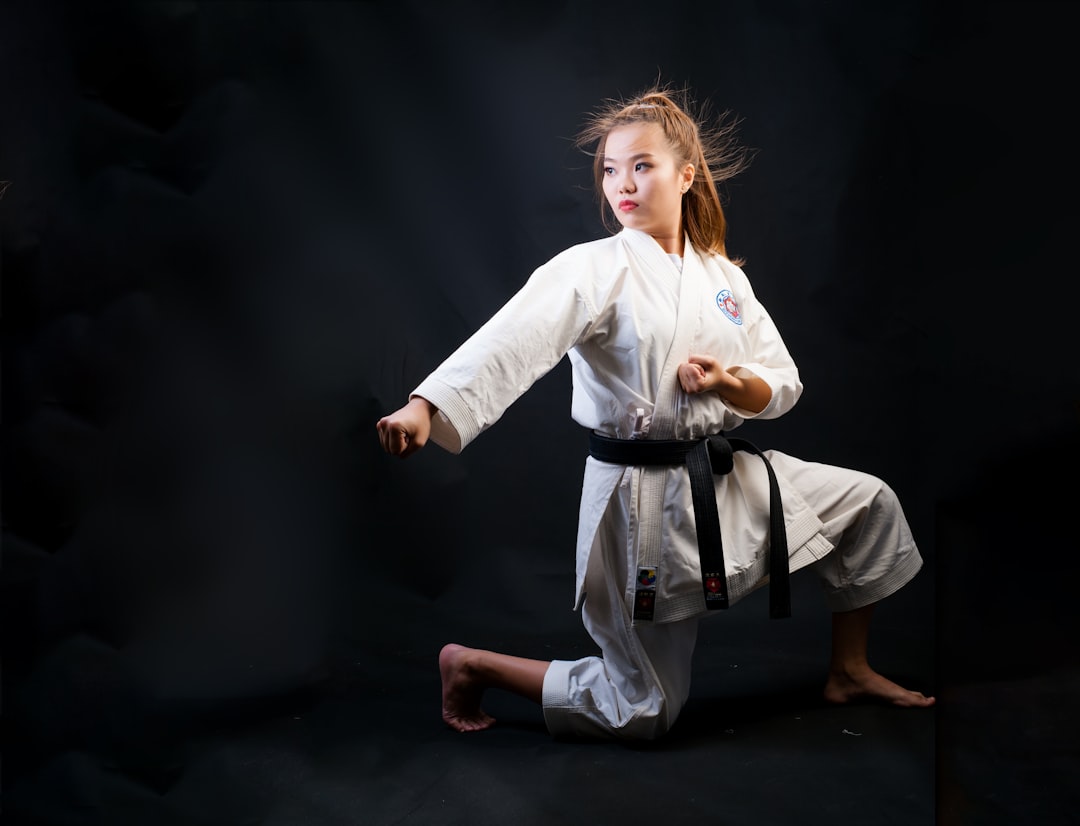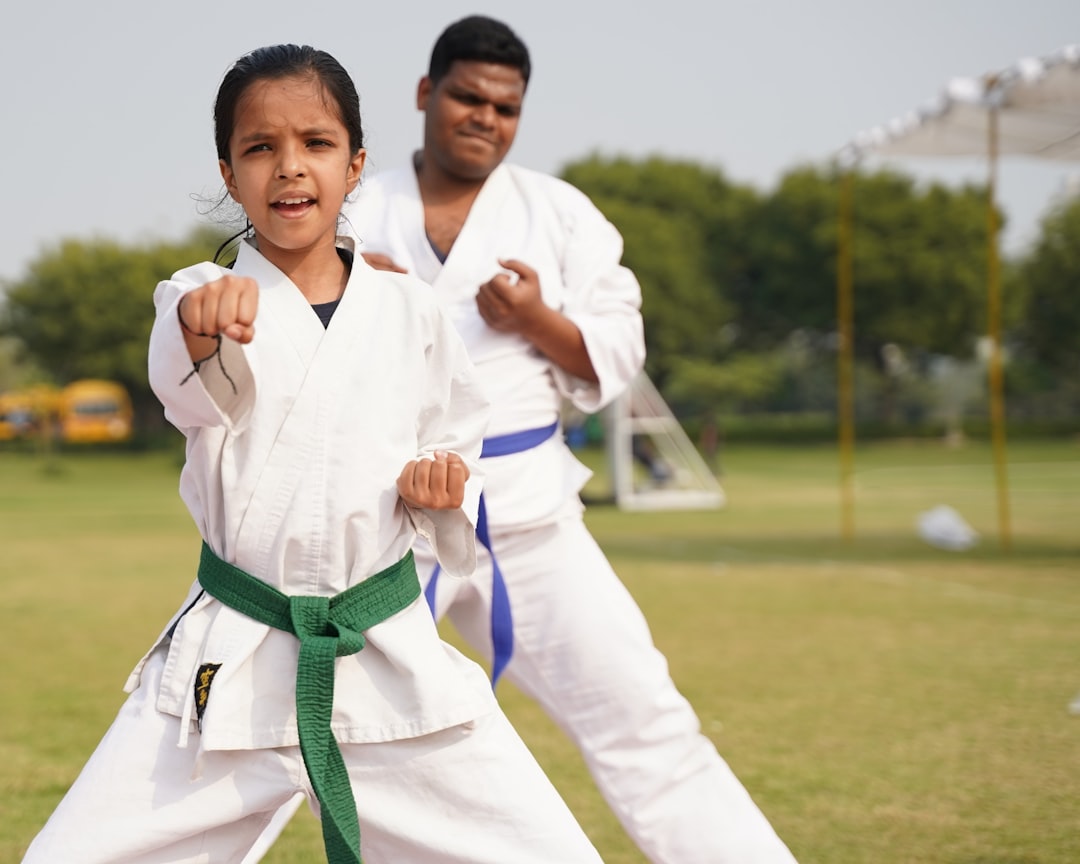The traditional karate outfit, known as a gi, is more than just a uniform; it's a symbol of respect and tradition deeply rooted in karate's origins. Essential for its functionality during practice, the gi consists of a jacket, trousers, and belt, each piece carefully designed to enhance movement and embody cultural significance. The jacket, known as an uwagi, is cut for flexibility, while the straight-legged ogi trousers balance modesty with mobility. The obi belt not only secures the gi but also signifies the wearer's skill level and rank within the martial art. The fabric, typically cotton or canvas, is chosen for its durability and breathability to withstand rigorous training. While white is traditionally worn for its connotations of purity and humility, variations in color may be introduced as one advances in skill. Over time, the gi has adapted to serve practical needs while maintaining its core symbolism. Today's karate practitioners predominantly wear the white gi, but with modern fabric options that offer better performance and personalization to align with specific styles or dojo preferences. Proper care of the gi is essential to maintain its functionality and respect for tradition, involving regular washing with mild detergent, air drying, and inspecting for any signs of wear to ensure longevity and safety in training. This ongoing connection to the gi reinforces the karate practitioner's commitment to the discipline and its values.
Explore the essence of a karate practitioner’s attire with our comprehensive guide on the karate outfit known as the gi. This article delves into the traditional origins, evolution, and significance of this foundational martial arts garment, offering insights for both novices and seasoned karateka alike. From its role in training to the respect it embodies, we’ll cover everything you need to know about the gi’s purpose, its components, and how to select and maintain your own. Join us as we highlight the importance of the karate uniform called in your martial arts journey.
- Understanding the Significance of the Karate Uniform: The Gi's Purpose and Components
- The Evolution of the Karate Uniform: From Traditional to Modern Usage
- Selecting and Maintaining Your Karate Outfit: Tips for Beginners and Experienced Practitioners Alike
Understanding the Significance of the Karate Uniform: The Gi's Purpose and Components

When engaging in karate, the uniform one wears is not merely a garment but a symbol of respect and tradition. Known as a “gi” within the martial arts community, this outfit serves a dual purpose: it allows practitioners to move freely during practice, while also paying homage to the discipline’s roots. The gi typically consists of a jacket, trousers, and a belt, each with its own significance. The jacket, or “uwagi,” is designed for ease of movement, enabling karateka to execute various techniques without restriction. The trousers, called “ogi,” are straight-legged and tailored to maintain modesty while allowing full range of motion. The belt, or “obi,” not only holds the waistband of the trousers but also signifies the rank of the wearer. Is it understood that the gi is an integral part of karate practice, reflecting both functionality and tradition?
The fabric of the gi itself is usually cotton or a heavier canvas, providing durability and breathability during intensive training sessions. The color of the gi can also vary, with white being the most common and symbolizing purity and humility. As practitioners advance in skill and rank, they may wear different colored belts, which indicate their level of achievement within the art. The design and material of the gi are carefully considered to ensure that it is both suitable for the physical demands of karate and respectful to the traditions that have been passed down through generations. What’s more, the gi serves as a tangible reminder of the discipline, focus, and respect that are central to karate philosophy and practice.
The Evolution of the Karate Uniform: From Traditional to Modern Usage

The karate uniform, known as a gi, has undergone significant changes over time, evolving from its traditional form to the modern version worn by practitioners today. Initially, the gi was a simple, white cotton garment modeled after the Chinese martial arts attire. It consisted of a jacket, trousers, and a belt, which served as more than just an indicator of rank but also as a symbol of the wearer’s commitment to the discipline. Over the years, the design and fabric of the gi have been adapted for practicality and comfort, responding to the needs of different climates and body types. Today, the traditional white gi remains the standard, though variations in color, material, and cut are permissible depending on the style of karate and the preferences of the dojo. Are the changes in the karate uniform merely aesthetic, or do they serve a purpose beyond appearance? The modifications to the gi have been made with functionality in mind, ensuring that the garment does not hinder movement or restrict flexibility during practice or competition. Additionally, modern fabrics offer improved durability and breathability, which are crucial for high-intensity training sessions.
In addition to functional improvements, the evolution of the karate uniform has also been influenced by cultural exchange and personal expression. While the core design elements, such as the belt system, have remained consistent, the trousers may now be zipped instead of tied, and jackets often feature buttons or snaps for ease of use. Moreover, some practitioners opt for slightly different cuts to accommodate personal preferences or to cater to gender-specific fits. Does this evolution mean that the traditional karate uniform has lost its significance? On the contrary, the evolution of the gi has not diminished its cultural and historical importance; rather, it has allowed the uniform to remain relevant in a modern context while still maintaining the integrity of the martial art’s traditions. The karate outfit, known colloquially as a gi, continues to be an integral part of the practice, symbolizing respect, discipline, and unity among practitioners worldwide.
Selecting and Maintaining Your Karate Outfit: Tips for Beginners and Experienced Practitioners Alike

When embarking on the journey of mastering karate, selecting and maintaining the appropriate attire is crucial for comfort, performance, and respect for the martial art’s traditions. A karate outfit, commonly known as a gi, serves as both a uniform and a canvas for learning and growth within this discipline. For beginners stepping onto the mat for the first time, understanding the essential elements of a quality gi is vital. Key factors to consider include the material, fit, and durability, which will not only facilitate movement but also honor the practice.
The top half of the gi, known as the jacket or “uyedama,” should be made of a sturdy yet flexible fabric like cotton or hemp blend. This ensures that it can withstand the rigors of regular training without losing its shape or causing discomfort. The trousers, referred to as “renneri,” ought to have a comfortable fit around the waist and legs, allowing for a full range of motion during practice. Additionally, while the traditional gi color is white, many dojos may allow other colors; however, it’s always best to consult with your sensei regarding the preferred choice.
Maintaining your karate outfit is as important as selecting one. After each training session, remove the sweat-soaked gi promptly to prevent odors and damage from salt and body oils. Wash your gi by hand or in a washing machine using mild detergent and avoid fabric softeners, which can reduce the gi’s ability to absorb moisture. Air drying is recommended to maintain the shape and longevity of the garment. It’s also essential to regularly inspect your gi for any signs of wear or fraying, ensuring that it remains both functional and respectful during your practice. Proper care of your karate outfit not only reflects your dedication to the art but also contributes to a safer and more effective training environment.
In conclusion, the karate uniform, commonly referred to as a gi, is far more than mere attire; it’s a garment steeped in tradition and integral to the practice of karate. Its design and evolution reflect the discipline’s journey from ancient martial arts to a modern sport. When selecting and maintaining your own gi, remember that comfort, durability, and proper care will enhance your training experience. Whether you are a novice or an experienced practitioner, your uniform is not just a karate outfit called, but a symbol of respect for the art and your fellow martial artists. As you continue on your martial arts journey, let the gi be a reminder of the discipline and dedication that karate demands.
